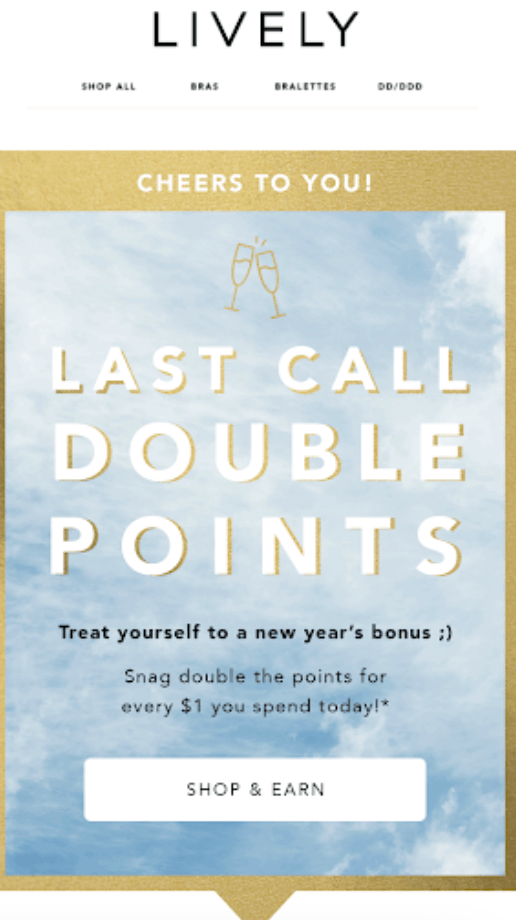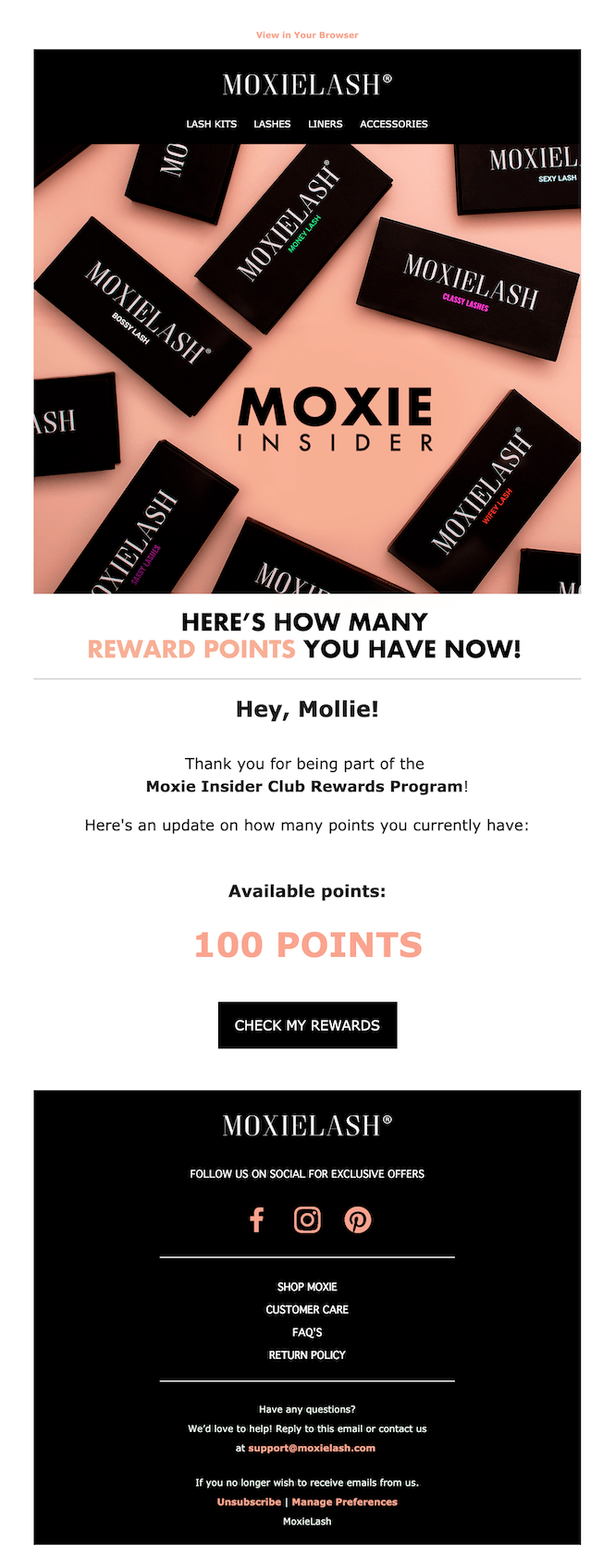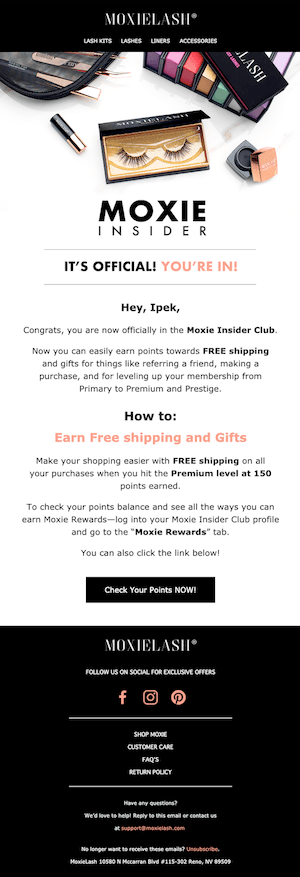The gold standard of communication
Your customers are no longer satisfied with a “one-size fits all” approach to communication. Shoppers’ attitudes have evolved, and now 71% of consumers expect companies to deliver personalized interactions. 76% even feel frustrated when this doesn’t happen – not something you want to run the risk of!
If you don’t tailor your messaging to your customers, not only could you damage those valuable relationships, but you’re also putting your entire business performance in jeopardy. Research shows that fast growing companies that drive 40% more of their revenue from personalization, proving it to be an incredibly important factor in revenue acceleration.
As well as bolstering business growth, personalized communications are a fantastic way to help shoppers form an emotional connection with your brand. The first step to making your customers feel seen is to effectively segment your data so that you can deliver customized messages through email, SMS or landing pages.
To achieve this, you’ll need a tool that gives you the best possible segmentation capabilities while also combining the power of a customer data platform with email and SMS capabilities. By using a platform like Klaviyo, you can segment your data to personalize your email marketing campaigns and take control of your customer communications for good!
Using loyalty to fuel customer retention
Now that we’ve highlighted the importance of personalized communication, let’s move on to another tool you can use to get to know your customers even better – loyalty.
To offer personalized content you need to be able to understand your customers’ individual purchasing behavior and customer lifecycle stage. A loyalty program offers you a wealth of meaningful loyalty data that allows you to deliver hyper-personalized email communications to customers. This inevitably leads to more authentic and productive customer interactions – win! In fact, loyalty emails perform 14 times better than regular marketing emails because they are personalized, relevant and resonate with your customer.
When your emails are informed by insightful data, garnered through loyalty programs, you can also be creative with how you incorporate personalized elements. This is a reliable way to make customers feel an emotional connection to your brand and encourage them to shop with you again. Here are some of the essential loyalty emails you could be sending out to your customers.
Welcome email
A welcome email (or series of emails) is sent to every customer when they create an account with your store. While it might sound like a no-brainer, it’s important to set the right tone and get off on the right foot with your customers.
Make it personal by telling customers more about your brand, what you stand for and what your values are. 65% of customers say their buying decisions are based on their beliefs, so show them how aligned you are.
It’s easy to forget that new customers don’t know all about your brand. Remind them of the benefits of your program, whether that’s planting a tree for every purchase or free shipping over a certain dollar amount. Remind them they’ve earned points for creating an account, and give an idea of how much those points are worth and how many more they need to collect before they can redeem them for something.
For example, cosmetics brand Josie Maran sends a welcome email that outlines all the ways to earn points, and gives 50 bonus points as a thank you for signing up.
![personalized communications: Welcome email [Josie Maran]](https://loyaltylion.com/app/uploads/2022/07/Screenshot-2022-07-12-at-14.58.40.png)
![personalized communications: Welcome email [Cupshe]](https://loyaltylion.com/app/uploads/2022/07/CUPSHE.png)
Surprise and delight emails
In an ideal world, once a customer has joined your loyalty program, your work is done. However, some of them will be at risk of not making further purchases within an expected timeframe. Personalized re-engagement emails (or “surprise and delight”) emails can help you win back those customers. Make sure they stand out from all the other messages hitting their inboxes.
Offer these customers benefits such as early access to new products to make them feel special, or tell them you’ve added extra points to their account. Make sure your loyalty program emails don’t get lost, by making it clear in your subject line and email copy that these perks are exclusive and not available to everyone.
Pulse Boutique brings customers back to their store with emails letting customers know that they’ve got exclusive access to an Insider-only sale.
![personalized communications: Surprise and delight email [Pulse Boutique]](https://loyaltylion.com/app/uploads/2022/07/Screenshot-2022-07-12-at-15.03.27.png)
![personalized communications: Surprise and delight email [The Vegan Kind Supermarket]](https://loyaltylion.com/app/uploads/2022/07/THE-VEGAN-KIND-SUPERMARKET.jpg)
Seasonal emails
To drive customer engagement, mark seasonal peaks in your marketing calendar – like Mother’s Day, Valentine’s Day or Black Friday.
Send personalized emails at these key peaks that include event-specific loyalty promotions, like double points events or early access to sales. For example, LoyaltyLion and Klaviyo brand LIVELY sent a loyalty email around New Year’s Eve, offering customers double points for every dollar spent, for a limited time only.


Don’t forget, the loyalty emails you send don’t only have to be about your loyalty program. They can include anything that builds your relationship with your customers, and this will be very different for each brand. Find what works for you.
Use LoyaltyLion and Klaviyo together to reinvigorate your retention strategy
By integrating LoyaltyLion with Klaviyo, you can use unique loyalty data to personalize your email marketing campaigns and deliver the kinds of communications your customers will be delighted to receive. Here are just some of the brilliant things you can do when using LoyaltyLion and Klaviyo together:
1. Segment your customers to deliver more personalized communications
Use LoyaltyLion’s insight functionality to segment your customers according to whether they are loyal, at-risk, or in need of winning back. You can then design and send hyper-targeted marketing campaigns to better open rates. For instance, you can create double points campaigns for your loyal customers to keep encouraging them to return to your store!
2. Use trigger-based emails to respond to customer actions
Set up unique, automatic campaigns for whenever a customer’s loyalty status changes. For example, with Klaviyo you can set up a trigger that allows you to send automated emails when a customer’s loyalty status changes to ‘Loyal’, ‘At Risk’, or ‘Win Back’. Owning your customer loyalty segmentation will allow you to create emails that encourage repeat purchases, increase your reward redemption and build a stronger relationship with your customers.
3. Level-up customer acquisition by automating your referral strategy
Customers acquired through referrals spend 200% more than those acquired via other channels. Using LoyaltyLion and Klaviyo together, you can encourage customers to refer a friend via email with very little effort.
The referred customer receives a unique URL taking them directly to your store. When they land on the page, they’re shown the ‘refer a friend’ reward, encouraging them to convert and make a purchase. To boost advocacy further, you can set up referral prompt emails, reminding your existing customers to make a referral to earn more points.
Loyalty email examples you need to steal!
Who doesn’t love a bit of #INSPO? We’ve gathered our all time favourite examples of brands using LoyaltyLion and Klaviyo together so you can see exactly what success looks like.
1. LIVELY
LIVELY won our ‘best use of emails‘ category in our 2021 Hall of Fame as we were totally blown away by what they achieved.
Using LoyaltyLion and Klaviyo together, LIVELY sends reward reminder emails that tell customers they have a reward available, as well as promoting well-timed double point events for their loyalty program members. These email campaigns tend to run around seasonal events, such as New Years or Black Friday, where loyal customer
For customers who haven’t shopped in a while, LIVELY also sends point expiry emails. These encourage at-risk customers to return as they’re reminded of points they have to spend. The results? Compared to regular customers, members of LIVELY’s loyalty program have a 103% higher AOV and have 146% higher average spend per customer.
2. MoxieLash
Using LoyaltyLion and Klaviyo has allowed MoxieLash to run and maintain a successful email strategy that drives customer retention and increases customer lifetime value. In just 12 months, MoxieLash’s loyalty program delivered:
- 1.5x higher average number of orders from loyalty program members than non-members
- 1.5x higher average spend from loyalty program members than non-members
- A 3x higher repeat purchase rate from loyalty program members (first to second purchase)
LoyaltyLion’s integration with Klaviyo has enabled MoxieLash to set up the following new triggered personalized communications flows:
- Welcome introduction to Moxie Insider Club
- Post-Purchase emails tailored to members and non-members
- Tier upgrade or downgrade notifications
- Monthly Reward reminders
- Rewards and points for a Birthday event


So, what are you waiting for?
By using LoyaltyLion and Klaviyo together you can deliver the kind of personalized communications that your customers will genuinely look forward to receiving. It’s never been easier to understand your customers’ individual behaviours and deliver perfectly-timed messages to match.
Ready to take your personalized communications to the next level?




